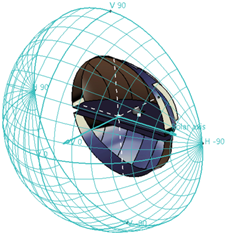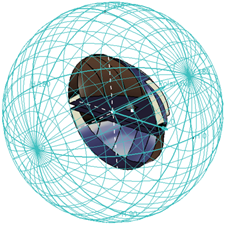Exporting Intensity Results in .ies or .ldt Format
When editing an intensity type XMP map, you can export the intensity results in the IESNA or Eulumdat formats according to the Ansys Intensity Type you defined in Speos.
- In File, click Export.
-
In Save as, select .ies or .ldt.
For more details about the IESNA format, see Standard File Format for Electronic Transfer of Photometric Data and Related Information. Speos does not support the version LM-63-19. Speos only supports LM-63-02 and previous ones (86, 91,95).
For more details about the Eulumdat format, see Eulumdat File Format Specifications.
Horizontal flip option is not taken into account during IES or EULUMDAT exports.
| Export format: IESNA LM-63 type A | |
|---|---|
|
 |
| Export format: IESNA LM-63 type B | |
|
 |
| Export format: IESNA LM-63 type C | |
|
 |
| Export format: Eulumdat | |
|
 |


